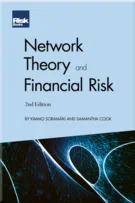Quantifying Credit Correlation Risk
Introduction
Correlation Basics: Definitions, Applications and Terminology
Empirical Properties of Correlation: How do Correlations Behave in the Real World?
The Pearson Correlation Model – Work of the Devil?
Cointegration – A Superior Concept to Correlation?
Financial Correlation Modelling – Bottom-up Approaches
Valuing CDOs with the Gaussian Copula – What Went Wrong?
The One-Factor Gaussian Copula Model – Too Simplistic?
Financial Correlation Models – Top-Down Approaches
Stochastic Correlation Models
Quantifying Market Correlation Risk
Quantifying Credit Correlation Risk
Hedging Correlation Risk
Correlation Trading Strategies – Opportunities and Limitations
Credit Value at Risk under Basel III – Too Simplistic?
Basel III and XVAs
Fundamental Review of the Trading Book
The Future of Correlation Modelling
Answers to Questions and Problems in Correlation Risk Modelling and Management
“A key aspect of any credit risk VaR model is credit correlation”
– John Hull
In this chapter we will discuss and quantify the correlation risk of financial products whose primary focus is credit risk. Let us just clarify what credit risk is: credit risk is the risk of financial loss due to an adverse change in the credit quality of a debtor.
There are principally two types of credit risk: (a) migration risk; and (b) default risk. Figure 11.1 gives an overview of credit risk.
In Figure 11.1, migration risk refers to a migration from one credit state to another: for example, a downward migration from AAA to B. An upward migration from B to AAA can also hurt an investor, if they are short a bond or if the investor is paying fixed in a credit default swap (CDS); see Figure 11.2. Default risk is a special case of migration risk for a migration of the debtor into the default state. Default risk exists only for a long credit position: for example, being long a bond or long a tranche in a collateralised debt obligation (CDO).


However, migration risk and default risk have quite different dynamics. For instance, if a bond migrates to a
Copyright Infopro Digital Limited. All rights reserved.
As outlined in our terms and conditions, https://www.infopro-digital.com/terms-and-conditions/subscriptions/ (point 2.4), printing is limited to a single copy.
If you would like to purchase additional rights please email info@risk.net
Copyright Infopro Digital Limited. All rights reserved.
You may share this content using our article tools. As outlined in our terms and conditions, https://www.infopro-digital.com/terms-and-conditions/subscriptions/ (clause 2.4), an Authorised User may only make one copy of the materials for their own personal use. You must also comply with the restrictions in clause 2.5.
If you would like to purchase additional rights please email info@risk.net









